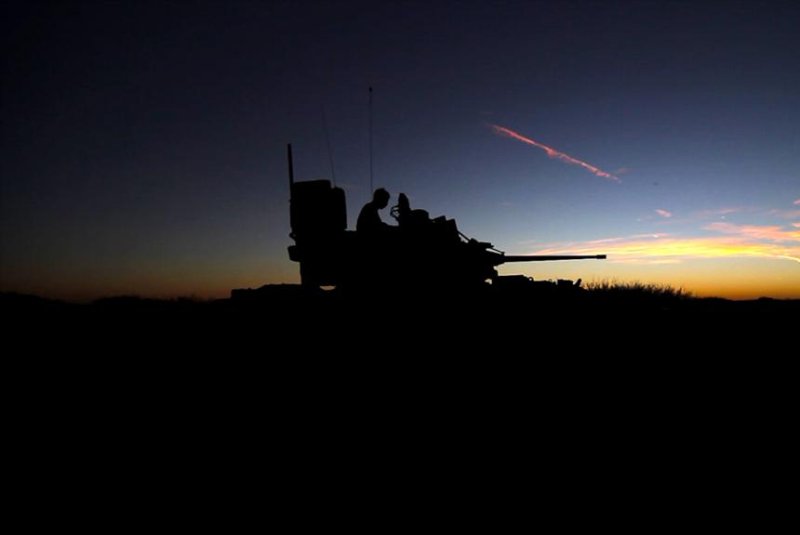The Army's next-generation combat vehicle will likely run on hybrid power and feature laser weapons, possibly for offensive and defensive purposes, experts said during an event to discuss the system's future on Tuesday at the Association of the U.S. Army. A M2 Bradley fighting vehicle is shown here during an October exercise in Texas. U.S. Army photo
WASHINGTON, Nov. 3 (UPI) -- The U.S. Army's next-generation combat vehicle will likely run on hybrid power and feature laser weapons, possibly for offensive and defensive purposes, experts said during an event to discuss the system's future on Tuesday at the Association of the U.S. Army.
The service's efforts to field its first next-generation combat vehicle by 2035 requires major decisions to be made by 2025, less than a decade away, Col. William T. Nuckols, director of the Mounted Requirements Division at the Maneuver Center of Excellence, said during the association's Institute of Land Warfare forum that focused on ground combat platforms.
Such a vehicle will likely also feature advanced-composite armor and active protection systems, but final decisions will hinge on future threats.
The biggest threats to such vehicles are currently ordnance like rocket-propelled grenades, armor-piercing munitions and improvised explosive devices, but threats could evolve to include cyber disruption, electronic warfare and even tactical nuclear weapons, RAND senior policy researcher Dr. John Gordon said at the forum.
He also noted that vehicles have not been hardened against nuclear electro-magnetic pulses, better known as EMP.
When it comes to fueling the combat vehicles of tomorrow, biofuels are being looked at as an alternative to traditional fuels, with the Defense Advanced Research Projects Agency experimenting with algae to produce the biofuels.
Fuel cell technology could power weapons like lasers while decreasing the battlefield logistical footprint, panelists said.
When it comes to protecting such vehicles, different advanced-composite materials are being assessed, including nanotechnology and nano-grain metals, Dr. Bryan Cheeseman, team leader at the Army Research Laboratory's Material Manufacturing and Technology Branch, said at the forum.
While several potentials were bandied about at the forum, the exact manifestation of the next-generation combat vehicle remains to be seen.
It could be a single combat vehicle replacing the Abrams tank, or Bradley fighting vehicle, or it could emerge as a family of vehicles.
"We don't know yet," said retired Brig. Gen. Thomas Goedkoop, now vice president at Booz Allen Hamilton, who moderated the event.















